Mary Anne Yarde's Blog: The Coffee Pot Book Club
April 18, 2022
The Stamford Slaying by Andrew McAuley
By Andrew McAuley
Publication Date: 25th March 2022
Publisher: Yorkie-Montague
Page Length: 245 Pages
Genre: Historical Fiction
Devon, AD 1402. Wool merchant Robert Wood is not well-liked. He is boastful, gruff, and takes offence as easily as he gives it, but he adores his pious younger wife and constantly seeks social advancement to please her. Robert attempts to bribe the notoriously corrupt sheriff for the position of bailiff but is outbid by neighbouring landowner, William Spiney. The following morning a hue and cry is raised; William has been murdered.
Robert is accused and summarily thrown into the notorious Lydford gaol. His only ally is Edmund, a shy and cloistered clerk. Together they rush to prove Robert’s innocence while tackling corrupt officials, vengeful relations of the deceased, local thugs, a retainer with a mysterious past, and Robert’s own scheming brother.
If evidence of Robert’s innocence isn’t found within ten days, he will hang. Meanwhile, Robert is unsure if Edmund is really on his side and Edmund remains unconvinced that the volatile Robert is truly innocent.
Amazon
Andrew McAuley is a Devon author, historian, and Dartmoor enthusiast - The Sampford slaying binds these three elements together. A sequel is in the early stages of writing, and a local history of conflict in medieval Devon will be published in late 2022.
Connect with Andrew:
Website • Twitter • Amazon Author Page • Goodreads
May 14, 2021
Blog Tour: Down Salem Way (The Loving Husband Series) by Meredith Allard
 July 14th – September 15th 2021
July 14th – September 15th 2021Publication Date: June 2019
Publisher: Copperfield Press
Page Length: 352 Pages
Genre: Historical Fiction
How would you deal with the madness of the Salem witch hunts?In 1690, James Wentworth arrives in Salem in the Massachusetts Bay Colony with his father, John, hoping to continue the success of John’s mercantile business. While in Salem, James falls in love with Elizabeth Jones, a farmer’s daughter. Though they are virtually strangers when they marry, the love between James and Elizabeth grows quickly into a passion that will transcend time.But something evil lurks down Salem way. Soon many in Salem, town and village, are accused of practicing witchcraft and sending their shapes to harm others. Despite the madness surrounding them, James and Elizabeth are determined to continue the peaceful, loving life they have created together. Will their love for one another carry them through the most difficult challenge of all?Grab the series: Down Salem Way
•
Her Dear and Loving Husband
•
Her Loving Husband's Curse
•
Her Loving Husband's Return
Meredith Allard
Down Salem Way
•
Her Dear and Loving Husband
•
Her Loving Husband's Curse
•
Her Loving Husband's Return
Meredith Allard
Meredith Allard is the author of the bestselling paranormal historical Loving Husband Trilogy. Her sweet Victorian romance, When It Rained at Hembry Castle, was named a best historical novel by IndieReader. Her nonfiction book, Painting the Past: A Guide for Writing Historical Fiction, was named a #1 New Release in Authorship and Creativity Self-Help by Amazon. When she isn’t writing she’s teaching writing, and she has taught writing to students ages five to 75. She loves books, cats, and coffee, though not always in that order. She lives in Las Vegas, Nevada. Visit Meredith online at www.meredithallard.com.
Website • Facebook • LinkedIn • Pinterest • BookBub • Amazon Author Page Tour Schedule Coming Soon...
Tour Schedule Coming Soon...
Book Review: The Cotillion Brigade by Glen Craney
 The Cotillion BrigadeA Novel of the Civil War and the Most Famous Female Militia in American HistoryBy Glen Craney
The Cotillion BrigadeA Novel of the Civil War and the Most Famous Female Militia in American HistoryBy Glen Craney 
Publication Date: 15th March 2021Publisher: Brigid's Fire PressPage Length: 399 PagesGenre: Historical Fiction
Georgia burns.Sherman’s Yankees are closing in.Will the women of LaGrange run or fight?Based on the true story of the celebrated Nancy Hart Rifles, The Cotillion Brigade is an epic novel of the Civil War’s ravages on family and love, the resilient bonds of sisterhood in devastation, and the miracle of reconciliation between bitter enemies.1856. Sixteen-year-old Nannie Colquitt Hill makes her debut in the antebellum society of the Chattahoochee River plantations. A thousand miles north, a Wisconsin farm boy, Hugh LaGrange, joins an Abolitionist crusade to ban slavery in Bleeding Kansas.Five years later, secession and war against the homefront hurl them toward a confrontation unrivaled in American history. “‘… Such feminine gallantry recalls the grand exploits of another Georgia heroine of glory past, Nancy Hart, the patriotic spy for General Washington’s colonial army, who outwitted a pack of armed Tories to defend her frontier cabin. We salute these modern Nancies of LaGrange and do hereby bestow upon their company the agnomen: The Nancy Hart Rifles.’Sixteen-year-old Nancy “Nannie” Colquitt Hill has a bright and promising future. Her head is filled with romantic notions towards a certain lawyer - Jeremiah Brown Morgan. But Nannie’s rival, the beautiful Sallie Fanny Reid, has also set her sights on the handsome lawyer. War was the last thing on her mind.Oscar Hugh LaGrange was a farmer, who, whilst labouring, spent some of his time quarrelling with his younger brother on the Bible’s definition of slavery. On one auspicious day, he meets Professor Edward Daniels. This acquaintance sets him on a path he could never have foreseen. Instead of arguing about slavery, he is determined to do something about it.Based upon a true story, The Cotillion Brigade: A Novel of the Civil War and the Most Famous Female Militia in American History by Glen Craney tells the truly fascinating story about the female militia of LaGrange during the American Civil War.Craney has presented his readers with a country that is divided. What is unusual about this novel is that we witness the conflict through the eyes of a woman. When the men go off to war, there is no one left to run the businesses and the plantations except for the women. Nannie, as young as she is, can see the danger that the war presents—LaGrange is a railway town, which comes with both benefits and detriment and, with no men to defend it, it is left to the women to take up arms and defend what is theirs. Nannie takes it upon herself to lead and teach the women drills. They must become a militia capable of protecting themselves and those dependent upon them. With the help of Dr. Augustus “Gus” Ware, one of the few men left behind due to ill health, Nannie readies her militia to defend their town against any Yankees that may come their way.Nannie is an exceptionally strong woman, fuelled by a stubbornness and determination to prove Gus wrong at every turn. But she is also passionate and a fierce protector of her community. And despite their rivalry, Nannie depends on Gus to teach her how to lead, and how to fight. She uses the challenges that Gus throws her way to strengthen her forces. Nannie is not hindered by fear or inability, and seems able to achieve anything she puts her mind to, whether that be defending her town or playing matchmaker. I thought Nannie’s depiction was not only fabulously written but also one whose life has been throughly researched.Hugh was a character that fascinated me. Hugh has no sympathy for the South, but he studies, in-depth, Joseph Wheeler’s handbook (Joseph was a cavalry general in the Confederate States Army). This handbook, written by the enemy, becomes something of a blueprint. Hugh uses the knowledge he now has to train his men. When Hugh meets Wheeler in battle, he has the advantage of knowing his opponent’s strategies, the way his mind works, but Wheeler always seems to be one step ahead. It turns into a battle of wills, more about beating the other than about winning the battle, although both harbour some respect, on a military level, for each other. Despite his reliance on Wheeler’s strategies, Hugh’s respect can only go so far and his continued losses make him determined to capture, or kill, his competitor, and I found myself thinking how war forced people to do things they would never normally consider—how does a farmer, or teacher, stoop to murder to solve his problems?Hugh is a man of two sides. He is either a gentleman, offering aid to women and doing what he can to keep his men in one piece, or hell-bent on winning the war, and will stop at nothing to do so. He is not without help as he rises through the ranks, for his brother follows him to war and he makes friends among the other officers. Hugh’s determination, however, gives him an almost blinkered vision. When offered furlough, he refuses, preferring to stay with his men and fight the Rebs, then go home to his wife.Both Hugh and Nannie are very similar leaders, each with their own manual to follow with which they used to train their troops, but as this novel progresses, their goals waver, change. Hugh focuses on Wheeler, and LaGrange became a hospital town. Nannie's militia spend their days treating the wounded rather than drilling and preparing for battle. Nevertheless, as the war progresses, and Hugh’s forces find themselves facing a town that bears his surname, with a female militia standing in their way, the pace of the story really picks up as if the drums were beating faster, urging you to turn those pages. I became immersed in the history, and the hours flew by as I lost myself in this spellbinding novel. Even after finishing this book I felt slightly bereft, wanting more.The story is rich with detail, which will entrance you and, while you are distracted, circle around and cut off your escape, leaving you with no choice but to keep reading until there are no pages left to turn. Craney’s understanding of the historical period, including all of its controversy and acts of heroism, shines through in every sentence. It is fair to say that Craney has breathed life not only into the lungs of historical characters long dead but also into the era as well.The Cotillion Brigade: A Novel of the Civil War and the Most Famous Female Militia in American History by Glen Craney is a novel of resistance, hope, loss and determination, to carry on and fight until the last breath leaves your body, to protect what you love and what you are passionate about. It is a book that once read, is impossible to forget.I Highly RecommendReview by Ellie YardeThe Coffee Pot Book ClubAmazon UK • Amazon USGlen Craney
“‘… Such feminine gallantry recalls the grand exploits of another Georgia heroine of glory past, Nancy Hart, the patriotic spy for General Washington’s colonial army, who outwitted a pack of armed Tories to defend her frontier cabin. We salute these modern Nancies of LaGrange and do hereby bestow upon their company the agnomen: The Nancy Hart Rifles.’Sixteen-year-old Nancy “Nannie” Colquitt Hill has a bright and promising future. Her head is filled with romantic notions towards a certain lawyer - Jeremiah Brown Morgan. But Nannie’s rival, the beautiful Sallie Fanny Reid, has also set her sights on the handsome lawyer. War was the last thing on her mind.Oscar Hugh LaGrange was a farmer, who, whilst labouring, spent some of his time quarrelling with his younger brother on the Bible’s definition of slavery. On one auspicious day, he meets Professor Edward Daniels. This acquaintance sets him on a path he could never have foreseen. Instead of arguing about slavery, he is determined to do something about it.Based upon a true story, The Cotillion Brigade: A Novel of the Civil War and the Most Famous Female Militia in American History by Glen Craney tells the truly fascinating story about the female militia of LaGrange during the American Civil War.Craney has presented his readers with a country that is divided. What is unusual about this novel is that we witness the conflict through the eyes of a woman. When the men go off to war, there is no one left to run the businesses and the plantations except for the women. Nannie, as young as she is, can see the danger that the war presents—LaGrange is a railway town, which comes with both benefits and detriment and, with no men to defend it, it is left to the women to take up arms and defend what is theirs. Nannie takes it upon herself to lead and teach the women drills. They must become a militia capable of protecting themselves and those dependent upon them. With the help of Dr. Augustus “Gus” Ware, one of the few men left behind due to ill health, Nannie readies her militia to defend their town against any Yankees that may come their way.Nannie is an exceptionally strong woman, fuelled by a stubbornness and determination to prove Gus wrong at every turn. But she is also passionate and a fierce protector of her community. And despite their rivalry, Nannie depends on Gus to teach her how to lead, and how to fight. She uses the challenges that Gus throws her way to strengthen her forces. Nannie is not hindered by fear or inability, and seems able to achieve anything she puts her mind to, whether that be defending her town or playing matchmaker. I thought Nannie’s depiction was not only fabulously written but also one whose life has been throughly researched.Hugh was a character that fascinated me. Hugh has no sympathy for the South, but he studies, in-depth, Joseph Wheeler’s handbook (Joseph was a cavalry general in the Confederate States Army). This handbook, written by the enemy, becomes something of a blueprint. Hugh uses the knowledge he now has to train his men. When Hugh meets Wheeler in battle, he has the advantage of knowing his opponent’s strategies, the way his mind works, but Wheeler always seems to be one step ahead. It turns into a battle of wills, more about beating the other than about winning the battle, although both harbour some respect, on a military level, for each other. Despite his reliance on Wheeler’s strategies, Hugh’s respect can only go so far and his continued losses make him determined to capture, or kill, his competitor, and I found myself thinking how war forced people to do things they would never normally consider—how does a farmer, or teacher, stoop to murder to solve his problems?Hugh is a man of two sides. He is either a gentleman, offering aid to women and doing what he can to keep his men in one piece, or hell-bent on winning the war, and will stop at nothing to do so. He is not without help as he rises through the ranks, for his brother follows him to war and he makes friends among the other officers. Hugh’s determination, however, gives him an almost blinkered vision. When offered furlough, he refuses, preferring to stay with his men and fight the Rebs, then go home to his wife.Both Hugh and Nannie are very similar leaders, each with their own manual to follow with which they used to train their troops, but as this novel progresses, their goals waver, change. Hugh focuses on Wheeler, and LaGrange became a hospital town. Nannie's militia spend their days treating the wounded rather than drilling and preparing for battle. Nevertheless, as the war progresses, and Hugh’s forces find themselves facing a town that bears his surname, with a female militia standing in their way, the pace of the story really picks up as if the drums were beating faster, urging you to turn those pages. I became immersed in the history, and the hours flew by as I lost myself in this spellbinding novel. Even after finishing this book I felt slightly bereft, wanting more.The story is rich with detail, which will entrance you and, while you are distracted, circle around and cut off your escape, leaving you with no choice but to keep reading until there are no pages left to turn. Craney’s understanding of the historical period, including all of its controversy and acts of heroism, shines through in every sentence. It is fair to say that Craney has breathed life not only into the lungs of historical characters long dead but also into the era as well.The Cotillion Brigade: A Novel of the Civil War and the Most Famous Female Militia in American History by Glen Craney is a novel of resistance, hope, loss and determination, to carry on and fight until the last breath leaves your body, to protect what you love and what you are passionate about. It is a book that once read, is impossible to forget.I Highly RecommendReview by Ellie YardeThe Coffee Pot Book ClubAmazon UK • Amazon USGlen Craney A graduate of Indiana University School of Law and Columbia University Graduate School of Journalism, Glen Craney practiced trial law before joining the Washington, D.C. press corps to write about national politics and the Iran-contra trial for Congressional Quarterly magazine. In 1996, the Academy of Motion Pictures, Arts and Sciences awarded him the Nicholl Fellowship prize for best new screenwriting. His debut historical novel, The Fire and the Light, was named Best New Fiction by the National Indie Excellence Awards. He is a three-time Finalist/Honorable Mention winner of Foreword Magazine’s Book-of-the-Year and a Chaucer Award winner for Historical Fiction. His books have taken readers to Occitania during the Albigensian Crusade, the Scotland of Robert Bruce, Portugal during the Age of Discovery, the trenches of France during World War I, the battlefields of the Civil War, and the American Hoovervilles of the Great Depression. He lives in Malibu, California.Connect with Glen: Website • Facebook • Twitter • Pinterest • Goodreads • Amazon Author Page.
A graduate of Indiana University School of Law and Columbia University Graduate School of Journalism, Glen Craney practiced trial law before joining the Washington, D.C. press corps to write about national politics and the Iran-contra trial for Congressional Quarterly magazine. In 1996, the Academy of Motion Pictures, Arts and Sciences awarded him the Nicholl Fellowship prize for best new screenwriting. His debut historical novel, The Fire and the Light, was named Best New Fiction by the National Indie Excellence Awards. He is a three-time Finalist/Honorable Mention winner of Foreword Magazine’s Book-of-the-Year and a Chaucer Award winner for Historical Fiction. His books have taken readers to Occitania during the Albigensian Crusade, the Scotland of Robert Bruce, Portugal during the Age of Discovery, the trenches of France during World War I, the battlefields of the Civil War, and the American Hoovervilles of the Great Depression. He lives in Malibu, California.Connect with Glen: Website • Facebook • Twitter • Pinterest • Goodreads • Amazon Author Page.
#BookReview — The Cotillion Brigade: A Novel of the Civil War and the Most Famous Female Militia in American History by Glen Craney #HistoricalFiction #AmericanCivilWar @glencraney

The Cotillion Brigade
A Novel of the Civil War and the Most Famous Female Militia in American History
By Glen Craney

Publication Date: 15th March 2021
Publisher: Brigid's Fire Press
Page Length: 399 Pages
Genre: Historical Fiction
Georgia burns.
Sherman’s Yankees are closing in.
Will the women of LaGrange run or fight?
Based on the true story of the celebrated Nancy Hart Rifles, The Cotillion Brigade is an epic novel of the Civil War’s ravages on family and love, the resilient bonds of sisterhood in devastation, and the miracle of reconciliation between bitter enemies.
1856. Sixteen-year-old Nannie Colquitt Hill makes her debut in the antebellum society of the Chattahoochee River plantations. A thousand miles north, a Wisconsin farm boy, Hugh LaGrange, joins an Abolitionist crusade to ban slavery in Bleeding Kansas.
Five years later, secession and war against the homefront hurl them toward a confrontation unrivaled in American history.

“‘… Such feminine gallantry recalls the grand exploits of another Georgia heroine of glory past, Nancy Hart, the patriotic spy for General Washington’s colonial army, who outwitted a pack of armed Tories to defend her frontier cabin. We salute these modern Nancies of LaGrange and do hereby bestow upon their company the agnomen: The Nancy Hart Rifles.’
Sixteen-year-old Nancy “Nannie” Colquitt Hill has a bright and promising future. Her head is filled with romantic notions towards a certain lawyer - Jeremiah Brown Morgan. But Nannie’s rival, the beautiful Sallie Fanny Reid, has also set her sights on the handsome lawyer. War was the last thing on her mind.
Oscar Hugh LaGrange was a farmer, who, whilst labouring, spent some of his time quarrelling with his younger brother on the Bible’s definition of slavery. On one auspicious day, he meets Professor Edward Daniels. This acquaintance sets him on a path he could never have foreseen. Instead of arguing about slavery, he is determined to do something about it.
Based upon a true story, The Cotillion Brigade: A Novel of the Civil War and the Most Famous Female Militia in American History by Glen Craney tells the truly fascinating story about the female militia of LaGrange during the American Civil War.
Craney has presented his readers with a country that is divided. What is unusual about this novel is that we witness the conflict through the eyes of a woman. When the men go off to war, there is no one left to run the businesses and the plantations except for the women. Nannie, as young as she is, can see the danger that the war presents—LaGrange is a railway town, which comes with both benefits and detriment and, with no men to defend it, it is left to the women to take up arms and defend what is theirs. Nannie takes it upon herself to lead and teach the women drills. They must become a militia capable of protecting themselves and those dependent upon them. With the help of Dr. Augustus “Gus” Ware, one of the few men left behind due to ill health, Nannie readies her militia to defend their town against any Yankees that may come their way.
Nannie is an exceptionally strong woman, fuelled by a stubbornness and determination to prove Gus wrong at every turn. But she is also passionate and a fierce protector of her community. And despite their rivalry, Nannie depends on Gus to teach her how to lead, and how to fight. She uses the challenges that Gus throws her way to strengthen her forces. Nannie is not hindered by fear or inability, and seems able to achieve anything she puts her mind to, whether that be defending her town or playing matchmaker. I thought Nannie’s depiction was not only fabulously written but also one whose life has been throughly researched.
Hugh was a character that fascinated me. Hugh has no sympathy for the South, but he studies, in-depth, Joseph Wheeler’s handbook (Joseph was a cavalry general in the Confederate States Army). This handbook, written by the enemy, becomes something of a blueprint. Hugh uses the knowledge he now has to train his men. When Hugh meets Wheeler in battle, he has the advantage of knowing his opponent’s strategies, the way his mind works, but Wheeler always seems to be one step ahead. It turns into a battle of wills, more about beating the other than about winning the battle, although both harbour some respect, on a military level, for each other. Despite his reliance on Wheeler’s strategies, Hugh’s respect can only go so far and his continued losses make him determined to capture, or kill, his competitor, and I found myself thinking how war forced people to do things they would never normally consider—how does a farmer, or teacher, stoop to murder to solve his problems?
Hugh is a man of two sides. He is either a gentleman, offering aid to women and doing what he can to keep his men in one piece, or hell-bent on winning the war, and will stop at nothing to do so. He is not without help as he rises through the ranks, for his brother follows him to war and he makes friends among the other officers. Hugh’s determination, however, gives him an almost blinkered vision. When offered furlough, he refuses, preferring to stay with his men and fight the Rebs, then go home to his wife.
Both Hugh and Nannie are very similar leaders, each with their own manual to follow with which they used to train their troops, but as this novel progresses, their goals waver, change. Hugh focuses on Wheeler, and LaGrange became a hospital town. Nannie's militia spend their days treating the wounded rather than drilling and preparing for battle. Nevertheless, as the war progresses, and Hugh’s forces find themselves facing a town that bears his surname, with a female militia standing in their way, the pace of the story really picks up as if the drums were beating faster, urging you to turn those pages. I became immersed in the history, and the hours flew by as I lost myself in this spellbinding novel. Even after finishing this book I felt slightly bereft, wanting more.
The story is rich with detail, which will entrance you and, while you are distracted, circle around and cut off your escape, leaving you with no choice but to keep reading until there are no pages left to turn. Craney’s understanding of the historical period, including all of its controversy and acts of heroism, shines through in every sentence. It is fair to say that Craney has breathed life not only into the lungs of historical characters long dead but also into the era as well.
The Cotillion Brigade: A Novel of the Civil War and the Most Famous Female Militia in American History by Glen Craney is a novel of resistance, hope, loss and determination, to carry on and fight until the last breath leaves your body, to protect what you love and what you are passionate about. It is a book that once read, is impossible to forget.
I Highly Recommend
Review by Ellie YardeThe Coffee Pot Book Club

Amazon UK • Amazon US

 A graduate of Indiana University School of Law and Columbia University Graduate School of Journalism, Glen Craney practiced trial law before joining the Washington, D.C. press corps to write about national politics and the Iran-contra trial for Congressional Quarterly magazine. In 1996, the Academy of Motion Pictures, Arts and Sciences awarded him the Nicholl Fellowship prize for best new screenwriting. His debut historical novel, The Fire and the Light, was named Best New Fiction by the National Indie Excellence Awards. He is a three-time Finalist/Honorable Mention winner of Foreword Magazine’s Book-of-the-Year and a Chaucer Award winner for Historical Fiction. His books have taken readers to Occitania during the Albigensian Crusade, the Scotland of Robert Bruce, Portugal during the Age of Discovery, the trenches of France during World War I, the battlefields of the Civil War, and the American Hoovervilles of the Great Depression. He lives in Malibu, California.
A graduate of Indiana University School of Law and Columbia University Graduate School of Journalism, Glen Craney practiced trial law before joining the Washington, D.C. press corps to write about national politics and the Iran-contra trial for Congressional Quarterly magazine. In 1996, the Academy of Motion Pictures, Arts and Sciences awarded him the Nicholl Fellowship prize for best new screenwriting. His debut historical novel, The Fire and the Light, was named Best New Fiction by the National Indie Excellence Awards. He is a three-time Finalist/Honorable Mention winner of Foreword Magazine’s Book-of-the-Year and a Chaucer Award winner for Historical Fiction. His books have taken readers to Occitania during the Albigensian Crusade, the Scotland of Robert Bruce, Portugal during the Age of Discovery, the trenches of France during World War I, the battlefields of the Civil War, and the American Hoovervilles of the Great Depression. He lives in Malibu, California.Connect with Glen: Website • Facebook • Twitter • Pinterest • Goodreads • Amazon Author Page.

We are so excited to be welcoming two of the characters from VEH Masters's fabulous book, The Castilians, on to The Coffee Pot Book Club for a fun Character Interview. #HistoricalFiction #Interview #Excerpt @VickiMasters9

The CastiliansBy VEH Masters

Publication Date: 26th November 2020
Publisher: Nydie Books
Page Length: 298 Pages
Genre: Historical Fiction
Finalist, Wishing Shelf Book Awards
Runner-up, SAW Barbara Hammond Trophy
Scotland 1546.
A group of nobles seize St Andrews Castle foiling all attempts to re-take it. Local lad Will is among them, fighting for the Protestant cause. His treasonous activities place his family in grave danger, forcing his sister Bethia into an unwelcome alliance. As the long siege unravels, Bethia and Will struggle over where their loyalties lie and the choice they each must make — whether to save their family, or stay true to their beliefs and follow their hearts.
This debut novel closely follows the true historical events of the siege of St Andrews Castle, and its dramatic re-taking.

Mary Anne: It is so lovely that you could drop by today and have a chat. Would you mind introducing yourselves to our readers?
Bethia: I am Bethia Seton, a young woman living in St Andrews, the foremost town of Scotland. It is the year of our Lord fifteen hundred and forty six (1546) and a most perilous time to be alive. The wee Queen Mary of Scots is upon the throne. She is no more than three years of age and all fight over who should wed her. The most determined is King Henry VIII of England who wants her for his son, Prince Edward. This king is not to be gainsaid and his attacks upon our country are cruel and relentless. Thanks be to Cardinal Beaton who protects our Queen and resists King Henry’s bullying of Scotland.
Will: I am Will Seton and my sister does not tell this story correctly. Cardinal Beaton may be Queen Mary’s great champion, but he is an evil man who had the Protestant George Wishart burned at the stake —a kind preacher who did not deserve such a terrible end. For this reason we took St Andrews Castle, Cardinal Beaton’s home, and hold it against all comers. We call ourselves The Castilians, and I am sure it cannot be true that some among us are in the pay of King Henry of England.
 St Andrews Castle in 1580.
St Andrews Castle in 1580.
Mary Anne: If you could live anywhere in the world, where would it be?
Bethia: This is one thing my brother and I can agree on. There is no town greater than St Andrews. Pilgrims come from as far away as Russia to do penance here, and our town is known as the second Jerusalem.
Will: We can agree our town is most magnificent but not for the pilgrims who follow Papist practices and swell the coffers of a rich church by paying for indulgences. Our town is great because here is where John Knox is finding his calling. Last week he preached his first service in Holy Trinity, the church of the people, unlike that ower-grand cathedral.
 John Knox
John KnoxMary Anne: What would you consider to be your greatest strength?
Bethia: My mother cannot read but she can write her name. She thinks a girl need do no more than this. My father, a merchant of St Andrews, has allowed me learning and now I can read Latin and speak French and help him with his accounts. This makes me happy.
Will: I am but fifteen years of age and most tall. I am called Will the Giant but my strength is not great, especially after months stuck inside this mouldering castle — which stinks, and all the Cardinal’s food stores have been eaten so we are always hungry. One day I hope I to grow into my strength, and become a man who is both powerful and true.
Mary Anne: What is your biggest regret?
Bethia: I should have stopped my brother. There was a chance and I missed it. Now I have entered the castle secretly from the seaward side, which was both terrifying and the most exciting thing I’ve ever done. But I could not persuade him home with me. He has a most unaccountable loyalty to those wicked Castilians.
Will: I did not know my fellow Castilians would attack the people of St Andrews, otherwise I would never have joined them. And they told me Cardinal Beaton would stand trial and a sentence be passed; I was misled here too. But they are my fellows and I believe our cause is right, so I will not desert them but stay until this terrible siege ends — regardless of what may happen to me.
 Home in South Street, although the windows are finer than anything we had in 1547.
Home in South Street, although the windows are finer than anything we had in 1547.
Mary Anne: If you could choose a magic power, what would it be?
Bethia: I am a young woman of the sixteenth century and the the word magic is most perilous. I do not have choices but will do what is best for my family, and obey my father. They say I must marry to save the family from punishment from my brother’s treasonous actions. I fear the man they may choose will be old. I would ask, most humbly, for the power to make my own choices — and for men to stop this turmoil about reform. Surviving this life is treacherous enough, without religious strife.
Will: For all to know and understand that the church must be reformed. Listen to the words of the great John Knox and we shall all be saved. But still, I would wish for the power to make change happen without this peril for the people of my town.
References :
All images are mine – the drawing of the castle was done by my husband taken from the Geddy map of 1580, which I have permission from the National Library of Scotland to use ( and which is also the cover of the book)

‘Castilians,’ Will says with a cheeky grin, and for a moment she sees again the little brother she loved to play with.
‘We are “The Castilians”.’ He thrusts his hips out, folding his arms and flings his head back, so that his cap falls off.
She cannot help but laugh. ‘But you’ll soon run short of food.’ She waves her arm around.
The smile fades from Will’s face and he sniffs. ‘Aye, ever the wee merchant, counting stock.’
‘If you’d put the time into learning Father’s trade you wouldn’t be in this mess.’
‘You think I want to spend my life bent over an abacus?’ He bangs his hand down on an empty barrel. ‘What will I say to St Peter at the Gates of Heaven, when he asks me to reflect on my life; that I counted and added and bought and sold? There must be something more, some higher purpose, and that’s what we’re working for here. The right way to live in God’s true faith.’
‘How is it that this whole escapade is about faith, and yet your fellows are running wild in our town? Our town, Will!’
All the fight goes from him and his shoulders droop. ‘I do not leave the castle, I do not condone their actions.’
She notices how his wrists dangle from the too-short sleeves of his jerkin. He may be tall, but he’s not yet come to manhood and, despite his broadening shoulders and beard growth, he can still sound like a lost boy.

Amazon UK • Amazon US
Read for free with #KindleUnlimited subscription.

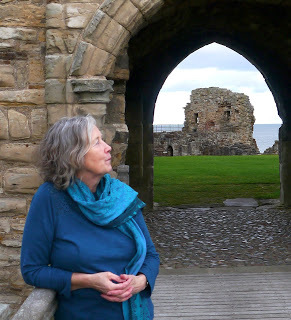 VEH Masters was born and grew up on a farm just outside St Andrews in Scotland. She's been fascinated by the siege of its castle ever since her history teacher took the class on a visit, which included going down the siege tunnel dug out of rock and peering into the bottle dungeon where Cardinal Beaton's body is said to have been kept, pickled in salt, for over a year. When she learned that the group who took the castle and held it for over 14 months, resisting the many attempts to re-take it, called themselves the Castilians, she knew, even then, it was the perfect title for the story.
VEH Masters was born and grew up on a farm just outside St Andrews in Scotland. She's been fascinated by the siege of its castle ever since her history teacher took the class on a visit, which included going down the siege tunnel dug out of rock and peering into the bottle dungeon where Cardinal Beaton's body is said to have been kept, pickled in salt, for over a year. When she learned that the group who took the castle and held it for over 14 months, resisting the many attempts to re-take it, called themselves the Castilians, she knew, even then, it was the perfect title for the story.The Castilians is her debut novel and the sequel, continuing the story of Bethia and Will, is due out on 30 November this year.
To find out more or have a chat with Vicki, please visit her website and blog You’ll also find her on Facebook, Twitter, and Instagram.

May 12, 2021
Welcome to Day 9 of the blog tour for Embers by Josephine Greenland #Excerpt #YoungAdult #BlogTour @greenland_jm

Embers By Josephine Greenland

March 18th - May 20th 2021
Publication Date: 4th March 2021
Publisher: Unbound
Page Length: 336 Pages
Genre: Young Adult / Crime / Mystery
Amazon UK • Amazon US • Waterstones • UK Bookshop
Two siblings, one crime. One long-buried secret. 17-year-old Ellen never wanted a holiday. What is there to do in a mining town in the northernmost corner of the country, with no one but her brother Simon – a boy with Asperger’s and obsessed with detective stories – for company? Nothing, until they stumble upon a horrifying crime scene that brings them into a generations-long conflict between the townspeople and the native Sami. When the police dismiss Simon’s findings, he decides to track down the perpetrator himself. Ellen reluctantly helps, drawn in by a link between the crime and the siblings’ own past. What started off as a tedious holiday soon escalates into a dangerous journey through hatred, lies and self-discovery that makes Ellen question not only the relationship to her parents, but also her own identity.
Follow the tour HERE!

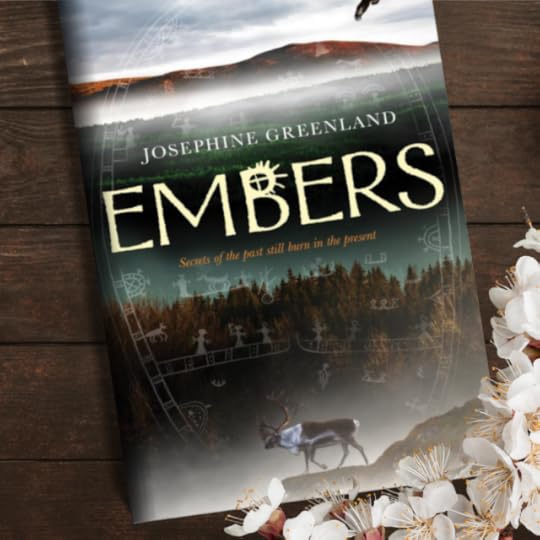
Blog Tour: ‘Tho I Be Mute by Heather Miller, July 19th – July 30th 2021
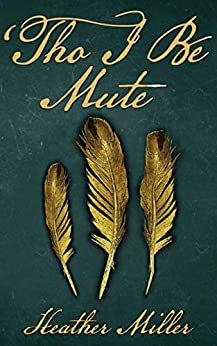 July 19th – July 30th 2021
July 19th – July 30th 2021Publication Date: 13th July 2021
Publisher: Defiance Press and Publishing
Page Length: 340 Pages
Genre: Historical Fiction/Romance
Home. Heritage. Legacy. Legend.In 1818, Cherokee John Ridge seeks a young man’s education at the Foreign Mission School in Cornwall, Connecticut. While there, he is overcome with sickness yet finds solace and love with Sarah, the steward’s quiet daughter. Despite a two-year separation, family disapproval, defamatory editorials, and angry mobs, the couple marries in 1824.Sarah reconciles her new family’s spirituality and her foundational Christianity. Although Sarah’s nature defies her new family’s indifference to slavery. She befriends Honey, half-Cherokee and half-African, who becomes Sarah’s voice during John’s extended absences.Once arriving on Cherokee land, John argues to hold the land of the Cherokees and that of his Creek neighbors from encroaching Georgian settlers. His success hinges upon his ability to temper his Cherokee pride with his knowledge of American law. Justice is not guaranteed.Rich with allusions to Cherokee legends, ‘Tho I Be Mute speaks aloud; some voices are heard, some are ignored, some do not speak at all, compelling readers to listen to the story of a couple who heard the pleas of the Cherokee. Amazon UK • Amazon US • Amazon CA • Amazon AU Heather MillerAs an English educator, Heather Miller has spent twenty-three years teaching her students the author’s craft. Now, she is writing it herself, hearing voices from the past.
Miller’s foundation began in the theatre, through performance storytelling. She can tap dance, stage-slap someone, and sing every note from Les Misérables. Her favorite role is that of a fireman’s wife and mom to three: a trumpet player, a future civil engineer, and a future RN. There is only one English major in her house.
While researching, writing, and teaching, she is also working towards her M FA in Creative Writing. Heather’s corndog-shaped dachshund, Sadie, deserves an honorary degree.
Website • Twitter • Facebook • LinkedIn • Instagram • Pinterest Tour Schedule Coming Soon...
Tour Schedule Coming Soon...
Blog Tour: Mendota and the Restive Rivers of the Indian and Civil Wars 1861-65
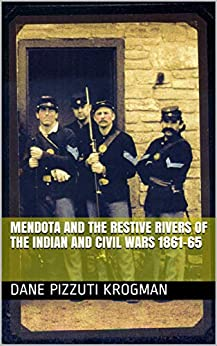 July 5th – July 16th 2021
July 5th – July 16th 2021Publication Date: 15th March 2021
Publisher: Independently Published
Page Length: 416 Pages
Genre: Historical Fiction
This is the fictional story set in Mendota, Minnesota of the Simmons family who are faced with the consequences of the Dakota Sioux Uprising of 1862 that swept across the state as well as the Civil War.The father, Dan enlists in the 1st regiment of Minnesota volunteers as a teamster. His two sons, who are both underage join the 2nd Regiment. John, aged 16 becomes a bugler and William, aged 15 becomes a drummer. Their sister, Sara is left behind with their mother, Louise to fend for themselves. Dan is sent east to fight with the Army of the Potomac while his sons are sent to the western theater to serve in the army of the Cumberland. Back in Mendota, their neighbor and close friend, Colonel Henry Sibley is ordered to stay in the state to control the Indian uprising.Dan will see action up through the battle of Antietam. He will later find himself in the hospital in Washington DC where he befriends a comrade also from the 1st Regiment. His sons barely miss the action at Shiloh but after, are engaged in all the major battles in the West. While they are passing through Louisville, William falls for a young woman, Mary who works as a hospital nurse. Back in Mendota, Sara befriends a young Chippewa native boy while her mother struggles with the breakup of her family. After Colonel Sibley defeats the Sioux, he is promoted to General and ordered to round up all the Dakota and push resettle them in the Dakotas.This leads to the punitive expeditions that he and General Sully will command up until 1864. William is captured at the battle up Missionary Ridge and then sent to the prison camp at Belle Isle, VA. and then onto Andersonville. GA. John receives a 30 day furlough and returns to Mendota before he re-enlists. Louise and Sara wait for the war’s end so the family can be reunited, but events may not turn out as anticipated. Amazon UK • Amazon US • Amazon CA • Amazon AU • The Indie Book Store Dane Pizzuti KrogmanDane Pizzuti Krogman was educated in the fine arts at the University of
Minnesota, receiving BFA and MFA degrees. He also specialized in Asian
art history, with a concentration in textile and surface design. After graduation, he
worked as a freelance designer creating fashion samples for women’s athletic wear. He
eventually relocated to California and taught at Cal-Poly Pomona in the Environmental
Design program then moved on to work as a pictorial artist for outdoor advertising.
Moving back to the Twin Cities in 1981 he formed a scenic design company call Artdemo
which in 10 years did over 1000 designs and productions for sets, props, and special
effects for television commercials and feature films. In the early 90’s he relocated to
Charleston, SC to work as a spec writer for feature film scripts. Six of his screenplays
have won major writing awards and two of these have been optioned for production.
During this time he also taught scene design at the College of Charleston. This position
led to an adjunct teaching position at Virginia Commonwealth University where he
taught art direction for filmmakers. In 1998 he took a full time teaching position at the
University of North Carolina School of the Arts where he taught art direction, life
drawing, set construction, and Asian film studies, eventually becoming chairman of the
department.
The common thread through all of this has been his passion for Japanese design, art,
and fashion. He has lived in Kyoto, Japan for the past 20 summers studying Japanese
kimono and obi design of the Heian and Edo periods. In 2002 he won the Grand Prize
for the best graphic novel at the Hiroshima manga competition. His graphic Novel
Skeleton boy was selected for inclusion into the Hiroshima peace memorial library in
2007.
He was most recently an adjunct faculty member in the Graduate Program in Digital
Filmmaking at Stony Brook Southampton. He is also an award-winning screenwriter. His
screenplay, The Schooner was produced as the Australian film, AUSTRALIA in 2008. He
has other award-winning films that have been optioned for production or are in
production.
As a Civil War historian he has worked as a technical advisor for the films, Dances with
Wolfs, Gettysburg, and Glory. He currently has one Civil War novel in pre-publication;
MENDOTA, AND THE RESTIVE RIVERS OF THE CIVIL AND INDIAN WARS 1861-65.
He also works part-time as a crew member on a Grand-Am Rolex series race team. The
team won the national championship in 2008.
 Tour Schedule Coming Soon...
Tour Schedule Coming Soon...
Book Review: Leningrad: The People's War by Rachel R. Heil.
 Leningrad: The People's War By Rachel R. Heil
Leningrad: The People's War By Rachel R. Heil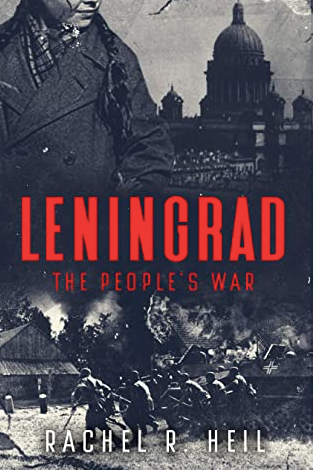
Publication Date: 1st February 2021Publisher: Independently PublishedPage Length: 386 Pages
Genre: Historical Fiction / WW2
Leningrad, 1941. As Europe crumbles under the German war machine, the people of the Soviet Union watch. There are whispers of war but not loud enough for the civilians of Leningrad to notice. Instead, they keep their heads down and try to avoid the ever-watching eyes of their own oppressive government.University student Tatiana Ivankova tries to look ahead to the future after a family tragedy that characterizes life under the brutal regime. But, when the rumors that have been circulating the country become a terrifying reality, Tatiana realizes that the greatest fear may not be the enemy but what her fellow citizens are prepared to do to each other to survive. As his men plow through the Russian countryside, Heinrich Nottebohm is told to follow orders and ask no questions, even if such commands go against his own principles. His superiors hold over him a past event that continues to destroy him with every day that passes. But, when given the opportunity to take an act of defiance, Heinrich will jump at the chance, ignoring what the end results could be. Leningrad: The People’s War tells the harrowing beginning of a war that forever changed the landscape of a city, told through the eyes of both sides in a tale of courage, love, and sacrifice. Very few had noticed it before, but now everyone did. Leningrad was becoming a battleground for not only the Germans but for the Soviet government against its own people...To engage in a war on all fronts is difficult enough. But to fight a war when you are already being persecuted by those who are meant to be leading your country to victory is a catastrophe. For the residents of Leningrad, the war with Germany brings a new set of challenges. If they are to be victorious, then the Red Army must hold its ground and the government must look after its people. But this is Soviet Russia, a place where mistrust spreads quicker than misinformation and the Great Purge had already stolen some of the Red Army’s most talented generals. The peace treaty Stalin agreed with Hitler had turned out to be a worthless piece of paper—another terrible betrayal for Stalin to come to terms with. For the citizens of Leningrad, however, the battle to survive has only just begun...From the devastating aftermath of the Great Purge to the desperation of a people whose city is surrounded by enemy forces, Leningrad: The People’s War by Rachel R. Heil navigates the horror of the Siege of Leningrad during World War II.Heil has presented her readers with a historically rich tale, where nothing is beneath her attention. The fear of the NKVD, and the horrors of the Great Purge resulted in a nation that lived in constant terror. The immediate threat to life was not the distant rumblings of the German army, but Russia’s own Communist government, whose paranoid leader saw danger even where there was none. When the threat of war becomes something that can no longer be ignored, Stalin begins to blame, for the most part, imagined foreign enemies for all of their internal problems. Heil has depicted a country conflicted. Could Hitler be any worse than Stalin? Was it better to stick to the devil you know rather than risk it all with the devil you don’t? Stalin’s Iron fist reaction to every problem meant innocent people were persecuted, and this fear is depicted in this novel with a careful understanding of what it must have been like to live in Russia during this period.This novel, as the name suggests, is about The Siege of Leningrad. What we witness through the pages of this remarkable book is the systematic genocide of a city due to starvation and deliberate destruction of the city’s civilian population. At times this makes for some harrowing reading, especially as people start to slowly starve to death. Heil does not whitewash the horrors that the citizens of Leningrad faced. Through the eyes of Tatiana Ivankova we witness everything, including the disturbing desensitising of death.This deeply haunting novel tells the intimate and harrowing story of Tatiana Ivankova. Tatiana has good reasons to loath Stalin’s cruel and dangerous regime. She has already lost two members of her family, and she fears that it is only a matter of time before Stalin orders another purge. She will do anything to ensure that the lives of her immediate family are not threatened, even if it does mean agreeing to do whatever Josef Krasnoff, a newspaper reporter with an influential father, tells her to do. What she could never have imagined was that he would force her to join a unit of female volunteers who would help protect the city from the fascists that surrounded her. They were to represent the Party and Comrade Stalin. Failure was not an option. Tatiana’s initial response to this news was a desperate sense of despair. She felt utterly powerless. Tatiana had been forcibly conscripted into the army, and although she loathes Josef for what he has done to her, she excels at the job. Tatiana is a character that I came to care about. She is this bright and really lovely young woman who just wants to live in peace, to be free from both the Party and the German invaders, but life dictates otherwise. There is also an air of vulnerability about her which made her character very appealing. She is forced into the dangerous game of espionage, and there is nothing she can do about it. I thought Tatiana’s depiction was sublime. She is a character that a reader can get behind and root for.The other character of interest is Heinrich Nottebohm, a German officer with a mysterious past and who, like Tatiana, feels utterly disgusted by what they are being asked to do as well as what they are witnessing. Heinrich was a breath of fresh air, and a stark contrast to his commanding officer, Max. He is a quiet soul, but that does not make him weak. He knows how to play the game, he just wishes he was not playing it.There are many harrowing scenes in this novel, but there is one scene that stood out from the rest. Tatiana overhears a conversation, where a Russian Jew declares that he would rather have a German head of state than the one they currently have. He was not at all worried about being taken to a camp, for he was so sure that he would be released when they realised what a good citizen he was. This scene is very brief, a couple of sentences no more, but the innocent portrayal was utterly heartbreaking.Heil has explored the use of propaganda to inform, or misinform more often than not, the citizens of Leningrad. I thought Josef’s character was really interesting because he is a journalist who refuses to see the truth even when it is staring him in the face. He toes the Party lines and tries to turn every disaster into a victory and those who don’t agree with him are traitors. I could not decide if this blinkered vision of events was caused by fear, or by an unshakable arrogance and determination to make a name for himself.The dropping of leaflets from the Germans onto Leningrad to frighten them into compliance backfired because the residents were not even allowed to look at the leaflets, let alone read them, unless they wanted to be accused of treason. It must have been so confusing and frightening to know that the things you were told were probably not true, but then, as Joseph Goebbels, Reich Minister of Propaganda of Nazi Germany, once said, “If you tell a lie big enough and keep repeating it, people will eventually come to believe it...” Stalin promoted an image of himself as a benevolent ruler and champion of the Soviet Union, but his increasing paranoia meant his country was in no fit state to fight a war with Germany. Not yet, anyway. Heil demonstrates the destructive nature of propaganda and how some citizens were not so hoodwinked by what they were being told. They saw through the lies.As a tutor of modern history which encompasses Russia during this era, I am very familiar with the Siege of Leningrad, which made this story all the more poignant, and although I don’t know how this story will end, I do know how the siege ends. As I neared the end of this book, I wondered how Heil could fit in the rest of the story but, to my relief, I discovered that this is book one of a series, and thank goodness for that, for I am not done with these characters yet and I am looking forward to following their journey in the following books.This novel is a must-read for fans of quality Historical Fiction set in World War II.I Highly Recommend.Review by Mary Anne Yarde.The Coffee Pot Book Club.Amazon UK • Amazon US
Very few had noticed it before, but now everyone did. Leningrad was becoming a battleground for not only the Germans but for the Soviet government against its own people...To engage in a war on all fronts is difficult enough. But to fight a war when you are already being persecuted by those who are meant to be leading your country to victory is a catastrophe. For the residents of Leningrad, the war with Germany brings a new set of challenges. If they are to be victorious, then the Red Army must hold its ground and the government must look after its people. But this is Soviet Russia, a place where mistrust spreads quicker than misinformation and the Great Purge had already stolen some of the Red Army’s most talented generals. The peace treaty Stalin agreed with Hitler had turned out to be a worthless piece of paper—another terrible betrayal for Stalin to come to terms with. For the citizens of Leningrad, however, the battle to survive has only just begun...From the devastating aftermath of the Great Purge to the desperation of a people whose city is surrounded by enemy forces, Leningrad: The People’s War by Rachel R. Heil navigates the horror of the Siege of Leningrad during World War II.Heil has presented her readers with a historically rich tale, where nothing is beneath her attention. The fear of the NKVD, and the horrors of the Great Purge resulted in a nation that lived in constant terror. The immediate threat to life was not the distant rumblings of the German army, but Russia’s own Communist government, whose paranoid leader saw danger even where there was none. When the threat of war becomes something that can no longer be ignored, Stalin begins to blame, for the most part, imagined foreign enemies for all of their internal problems. Heil has depicted a country conflicted. Could Hitler be any worse than Stalin? Was it better to stick to the devil you know rather than risk it all with the devil you don’t? Stalin’s Iron fist reaction to every problem meant innocent people were persecuted, and this fear is depicted in this novel with a careful understanding of what it must have been like to live in Russia during this period.This novel, as the name suggests, is about The Siege of Leningrad. What we witness through the pages of this remarkable book is the systematic genocide of a city due to starvation and deliberate destruction of the city’s civilian population. At times this makes for some harrowing reading, especially as people start to slowly starve to death. Heil does not whitewash the horrors that the citizens of Leningrad faced. Through the eyes of Tatiana Ivankova we witness everything, including the disturbing desensitising of death.This deeply haunting novel tells the intimate and harrowing story of Tatiana Ivankova. Tatiana has good reasons to loath Stalin’s cruel and dangerous regime. She has already lost two members of her family, and she fears that it is only a matter of time before Stalin orders another purge. She will do anything to ensure that the lives of her immediate family are not threatened, even if it does mean agreeing to do whatever Josef Krasnoff, a newspaper reporter with an influential father, tells her to do. What she could never have imagined was that he would force her to join a unit of female volunteers who would help protect the city from the fascists that surrounded her. They were to represent the Party and Comrade Stalin. Failure was not an option. Tatiana’s initial response to this news was a desperate sense of despair. She felt utterly powerless. Tatiana had been forcibly conscripted into the army, and although she loathes Josef for what he has done to her, she excels at the job. Tatiana is a character that I came to care about. She is this bright and really lovely young woman who just wants to live in peace, to be free from both the Party and the German invaders, but life dictates otherwise. There is also an air of vulnerability about her which made her character very appealing. She is forced into the dangerous game of espionage, and there is nothing she can do about it. I thought Tatiana’s depiction was sublime. She is a character that a reader can get behind and root for.The other character of interest is Heinrich Nottebohm, a German officer with a mysterious past and who, like Tatiana, feels utterly disgusted by what they are being asked to do as well as what they are witnessing. Heinrich was a breath of fresh air, and a stark contrast to his commanding officer, Max. He is a quiet soul, but that does not make him weak. He knows how to play the game, he just wishes he was not playing it.There are many harrowing scenes in this novel, but there is one scene that stood out from the rest. Tatiana overhears a conversation, where a Russian Jew declares that he would rather have a German head of state than the one they currently have. He was not at all worried about being taken to a camp, for he was so sure that he would be released when they realised what a good citizen he was. This scene is very brief, a couple of sentences no more, but the innocent portrayal was utterly heartbreaking.Heil has explored the use of propaganda to inform, or misinform more often than not, the citizens of Leningrad. I thought Josef’s character was really interesting because he is a journalist who refuses to see the truth even when it is staring him in the face. He toes the Party lines and tries to turn every disaster into a victory and those who don’t agree with him are traitors. I could not decide if this blinkered vision of events was caused by fear, or by an unshakable arrogance and determination to make a name for himself.The dropping of leaflets from the Germans onto Leningrad to frighten them into compliance backfired because the residents were not even allowed to look at the leaflets, let alone read them, unless they wanted to be accused of treason. It must have been so confusing and frightening to know that the things you were told were probably not true, but then, as Joseph Goebbels, Reich Minister of Propaganda of Nazi Germany, once said, “If you tell a lie big enough and keep repeating it, people will eventually come to believe it...” Stalin promoted an image of himself as a benevolent ruler and champion of the Soviet Union, but his increasing paranoia meant his country was in no fit state to fight a war with Germany. Not yet, anyway. Heil demonstrates the destructive nature of propaganda and how some citizens were not so hoodwinked by what they were being told. They saw through the lies.As a tutor of modern history which encompasses Russia during this era, I am very familiar with the Siege of Leningrad, which made this story all the more poignant, and although I don’t know how this story will end, I do know how the siege ends. As I neared the end of this book, I wondered how Heil could fit in the rest of the story but, to my relief, I discovered that this is book one of a series, and thank goodness for that, for I am not done with these characters yet and I am looking forward to following their journey in the following books.This novel is a must-read for fans of quality Historical Fiction set in World War II.I Highly Recommend.Review by Mary Anne Yarde.The Coffee Pot Book Club.Amazon UK • Amazon US Rachel R. Heil is a historical fiction writer who always dreamed of being an author. After years of dreaming, she finally decided to turn this dream into a reality with her first novel, and series, Behind the Darkened Glass. Rachel is an avid history fan, primarily focused on twentieth century history and particularly World War Two-era events. In addition to her love for history, Rachel loves following the British Royal Family and traveling the world, which only opens the door to learning more about a country's history. Rachel resides in Wisconsin.Connect with Rachel: Facebook • Goodreads • Instagram • BookBub
Rachel R. Heil is a historical fiction writer who always dreamed of being an author. After years of dreaming, she finally decided to turn this dream into a reality with her first novel, and series, Behind the Darkened Glass. Rachel is an avid history fan, primarily focused on twentieth century history and particularly World War Two-era events. In addition to her love for history, Rachel loves following the British Royal Family and traveling the world, which only opens the door to learning more about a country's history. Rachel resides in Wisconsin.Connect with Rachel: Facebook • Goodreads • Instagram • BookBub
Welcome to Day 9 of the blog tour for A Matter of Conscience: Henry VIII, The Aragon Years by Judith Arnopp #HistoricalFiction #BlogTour #CoffeePotBookClub @JudithArnopp


17th March – 19th May 2021
Publication Date: February 2021
Publisher: Feed a Read
Page Length: 335 pages
Genre: Historical Fiction
‘A king must have sons: strong, healthy sons to rule after him.’
On the unexpected death of Arthur Tudor, Prince of Wales, his brother, Henry, becomes heir to the throne of England. The intensive education that follows offers Henry a model for future excellence; a model that he is doomed to fail.
On his accession, he chooses his brother’s widow, Catalina of Aragon, to be his queen. Together they plan to reinstate the glory of days of old and fill the royal nursery with boys.
But when their first-born son dies at just a few months old, and subsequent babies are born dead or perish in the womb, the king’s golden dreams are tarnished.
Christendom mocks the virile prince. Catalina’s fertile years are ending yet all he has is one useless living daughter, and a baseborn son.
He needs a solution but stubborn to the end, Catalina refuses to step aside.
As their relationship founders, his eye is caught by a woman newly arrived from the French court. Her name is Anne Boleyn.
A Matter of Conscience: the Aragon Years offers a unique first-person account of the ‘monster’ we love to hate and reveals a man on the edge; an amiable man made dangerous by his own impossible expectation.
Follow the tour:
Tour Schedule

The Coffee Pot Book Club
...more
- Mary Anne Yarde's profile
- 159 followers




